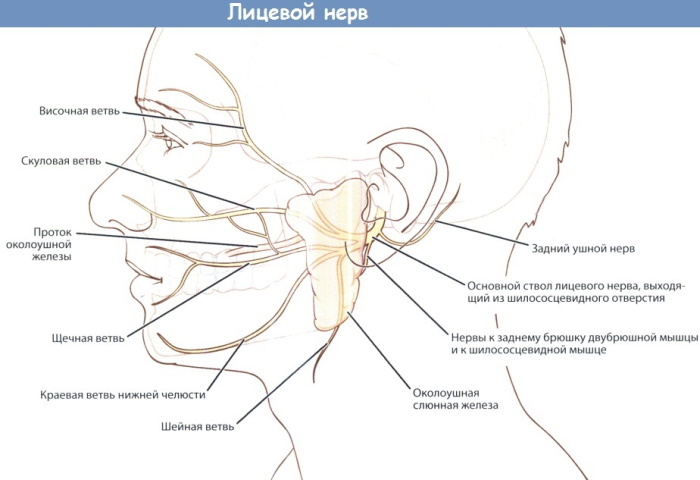Content
- General characteristics of the disease
- Reasons for the appearance
- Risk factors
- Symptoms and Signs
- Infectious or not to others
- Disease classification: forms
- Sharp
- Subacute
- Chronic
- The clinical picture of the development of disseminated pulmonary tuberculosis
- Infiltration process
- Decay phase
- Features of infection in a child
- Diagnostic methods
- Roentgenogram
- Differential differences
- Basic principles of treatment
- Drug therapy
- Physiotherapy
- The nuances of the patient's nutrition
- Recovery prognosis
- Complications and possible consequences
- Prevention methods
Disseminated tuberculosis is characterized by the formation of a large number of foci of inflammation against the background of lymphogenous and hematogenous spread of infection.
More often, this form of pathology develops in older people with reduced immunity. Without comprehensive treatment, the disease can be complicated by life-threatening conditions.

General characteristics of the disease
The disseminated form of tuberculosis is accompanied by the appearance of a large number of foci of infection in the tissues. The causative agent of the disease - Koch's bacillus - is able to penetrate the bloodstream. In this case, the infection spreads hematogenously. The lymphatic system may be affected.
More often, with the disseminated form, only the lung tissue is damaged, but a generalized process is also possible, with which pathogenic mycobacteria with blood or lymph flow are transferred to distant organs, forming foci of inflammation in them.
Reasons for the appearance
The main reason for the development of the disease is infection with microorganisms Mycobactérium tuberculósis. The disseminated form can occur both with primary infection and with secondary tuberculosis, i.e. in patients who have already undergone the acute phase of the pathology.
For such an unfavorable course, the following conditions are required:
- hypersensitization of the body to mycobacteria;
- tuberculous bacteremia;
- a sharp decrease in resistance to pathogenic microflora.
Risk factors
Most often, the spread of mycobacteria occurs when the patient has other infectious diseases. Measles, influenza, SARS, etc. are often the provoking factor in the development of the disseminated form. In addition, the presence of HIV can lead to such a course of tuberculosis.
Additional predisposing factors for the development of the disease include:
- malfunctions of the immune system;
- exacerbation of allergies;
- vitamin deficiency;
- diabetes;
- bad habits;
- hormonal disruptions;
- disorders of the pituitary gland.
The development of the disease leads to a prolonged stay in a state of stress, as well as regular physical fatigue.
Symptoms and Signs
In some patients, the development of a disseminated type of tuberculosis is asymptomatic and is detected by chance during routine fluorography.
However, in most patients, the pathology is accompanied by a deterioration in general well-being. In the acute course of the disease, the symptoms of tuberculosis are similar to the clinical manifestations of community-acquired pneumonia or ARVI.
First, the patient complains about:
- dry cough;
- general weakness;
- shortness of breath;
- an increase in body temperature up to 38 ° C.
At the initial stage of the development of the disease, cyanosis of the skin and mucous membranes is possible. Symptoms increase over 2 weeks. Body temperature can rise up to 40 ° C. When coughing, gray-green sputum begins to separate.
Important information: Basic principles of treatment of tuberculosis of the spine and bones in adults
If small blood vessels are damaged, coughing up mucus streaked with blood is possible. In most patients, at the last stage of the development of the pathological process, night sweats and tachycardia are observed.
Patients often feel very tired even after little physical activity. In severe cases, respiratory failure develops.
Disseminated tuberculosis often affects only the lungs, because in this organ there is a branched system of small blood vessels through which mycobacteria spread.
However, under some circumstances, pathogenic microflora can spread to distant organs, leading to the appearance of additional symptoms.
In the typhoid form, when the abdominal organs are damaged, signs of general intoxication increase. Vomiting, diarrhea, nausea are possible. Delirium and dizziness are less common.
Through the bloodstream, mycobacteria can enter the meninges, causing inflammation and meningitis symptoms. In this case, the patient complains of severe headaches, stiff neck muscles, loss of consciousness, convulsions, etc.
In rare cases, in people with reduced immunity, tuberculosis is accompanied by the development of sepsis. The disease proceeds with severe fever, spleen dysfunction, impaired consciousness and progressive pulmonary heart disease.

Infectious or not to others
People with an open form of disseminated tuberculosis pose a danger to others, because are a source of mycobacteria. A special risk group of infection includes those who live with relatives suffering from this pathology.
Disease classification: forms
The disseminated type of tuberculosis can occur in an acute, subacute or chronic form. The degree of danger of pathology depends on the nature of its course.
Sharp
The acute form is characterized by a rapid increase in signs of damage to the lungs and other organs after the end of the incubation period of tuberculosis infection.
Severe symptoms of general intoxication are often present. The patient's condition in a short time can deteriorate so much that he will need urgent hospitalization.

Subacute
The subacute form of the disease is accompanied by symptoms characteristic of protracted bronchitis. Patients complain of rapid fatigue and decreased performance.
The patient is periodically worried about a cough, accompanied by sputum, as well as pain in the side. Poor appetite and weight loss are often observed. The body temperature rises periodically. Development of tuberculous pleurisy is possible.
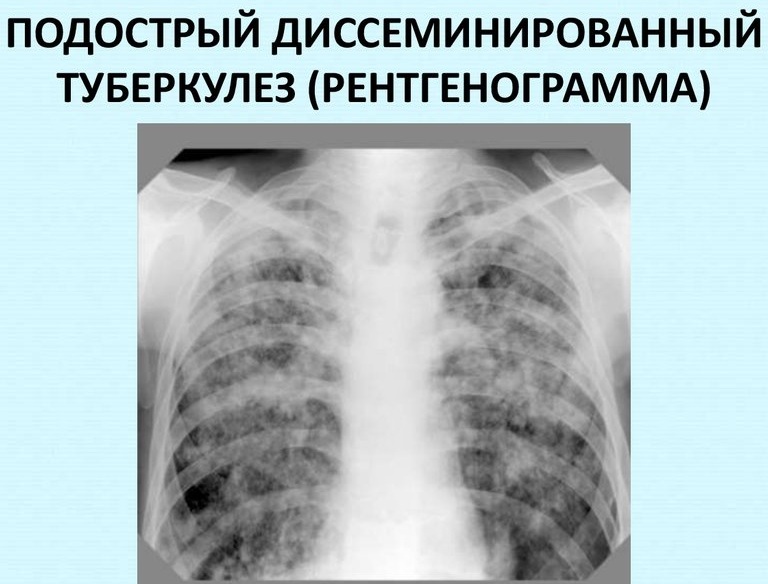
Chronic
Chronic disseminated tuberculosis often develops in patients who have undergone an acute or subacute phase of the course of the disease. Outside of periods of exacerbation, the disorder is asymptomatic. When the infection intensifies, the symptoms of general intoxication of the body predominate.
With a long course, the chronic form of the disease can lead to the development of persistent respiratory failure.
Due to the defeat of the vessels of the small circle and a decrease in their length, tuberculosis is often complicated by cor pulmonale and the symptoms characteristic of this disorder. If untreated, the likelihood of damage to the liver, intestines, spleen and other internal organs is high.
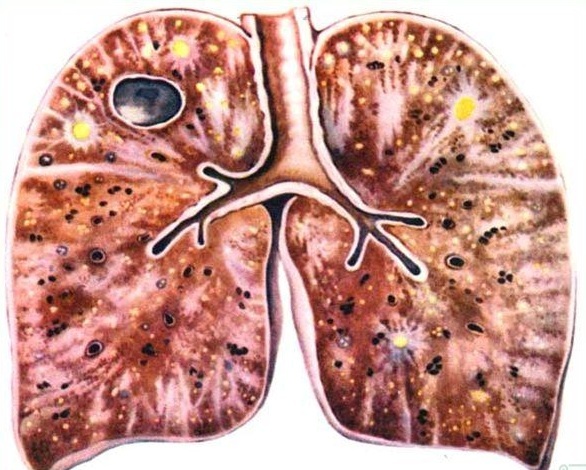
The clinical picture of the development of disseminated pulmonary tuberculosis
The disseminated type of tuberculosis has an incubation period and 3 phases of development, including:
- focal;
- infiltrating;
- decay.
Important information: The clinical picture of the course of fibrocavernous pulmonary tuberculosis
The initial focal phase is characterized by the presence of a small focus of infection in one or more segments of the lung. This condition does not lead to severe symptoms. The focal phase is considered the pre-stage of disseminated tuberculosis.
Infiltration process
At this phase of the pathological process, exudate is actively released. In the foci of infection, toxic substances accumulate. Small areas of necrosis are present. With complex treatment, it is possible to completely restore damaged lung tissue.
Decay phase
At this stage of the development of the disease, a secondary infection often joins. Exudate, purulent contents and dead tissue begin to come out with phlegm. The cough gets worse. Hemoptysis appears. The tissues affected by necrosis are melted. Caverns are formed.
Coughing leads to the spread of pathogenic microflora. Thus, additional foci of infiltration are formed, in which the tissues die off and melt.

Features of infection in a child
In children, disseminated tuberculosis is rarely diagnosed. However, their disease is severe. Intoxication leads to a rapid deterioration in the general condition.
With this course of tuberculosis in children, the following symptoms are observed:
- a sharp rise in temperature above 40 ° C;
- dry cough attacks;
- loss of appetite;
- difficulty breathing;
- pallor of the skin.
Often the pathological process becomes generalized. The liver and other organs are enlarged. A red rash appears on the skin. Loss of consciousness and seizures are possible.
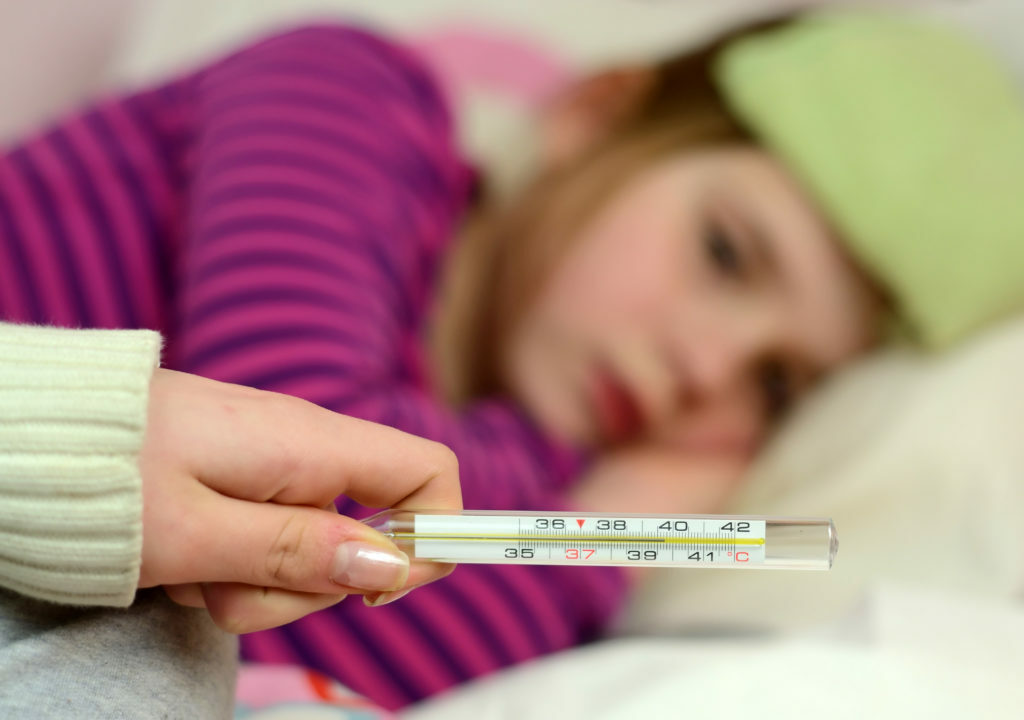
Diagnostic methods
Patients with characteristic signs of tuberculosis require consultation with a phthisiatrician. The specialist performs an external examination of the patient and collects an anamnesis. Radiography is required.
In addition, the following studies are required:
- general and biochemical blood tests;
- Sputum PCR;
- Analysis of urine;
- UAC;
- Mantoux test;
- examination of the eyeball.
Endoscopy and bronchoscopy may be required to confirm the diagnosis. In severe cases, an analysis of cerebrospinal fluid is prescribed.
Roentgenogram
With disseminated tuberculosis, an X-ray image shows:
- foci of inflammation;
- poorly expressed drawing of the lungs;
- increased VHLU;
- calcifications;
- expansion of the roots of the lungs.

Differential differences
The clinical manifestations of disseminated tuberculosis are similar to those of diseases such as sarcoidosis, lung cancer, and bilateral pneumonia.
It is possible to exclude these pathologies after analyzing the results obtained during diagnostic studies. In rare cases, a biopsy is done to confirm tuberculosis.
Basic principles of treatment
Therapy for this pathological condition is carried out in an anti-tuberculosis dispensary. First of all, drugs are selected that suppress the activity of pathogenic microflora.
In addition, the doctor prescribes medications to reduce the intensity of symptomatic manifestations and maintain the work of all body systems.
Physiotherapy is recommended to restore the functioning of the respiratory system. To prevent the development of cachexia, patients are prescribed a high-calorie diet.
Drug therapy
Most often, the following anti-tuberculosis drugs are used for this disease:
- Isoniazid.
- Rifampicin.
- Ethambutol.
- Pyrazinamide.
In most cases, a combination of drugs is used. In the acute course, corticosteroids are included in the therapy regimen. Prednisolone is especially effective. Doctors often prescribe immunomodulators, incl. Alpha interferon and thymus preparations.
To stimulate the excretion of sputum from the bronchi, patients are recommended to take mucolytics.
To protect the liver from the negative effects of toxic substances present in medicines, hepatoprotectors are prescribed. If necessary, antipyretic, anti-inflammatory, analgesic drugs are selected.
Important information: The clinical picture of the development of tuberculous pleurisy in humans

Physiotherapy
After suppression of acute symptoms and stabilization of the general condition, the patient is prescribed the following physiotherapy procedures:
- Microwave.
- Magnetotherapy.
- Electrophoresis.
- Healing baths.
In addition, patients are prescribed breathing exercises and exercise therapy.
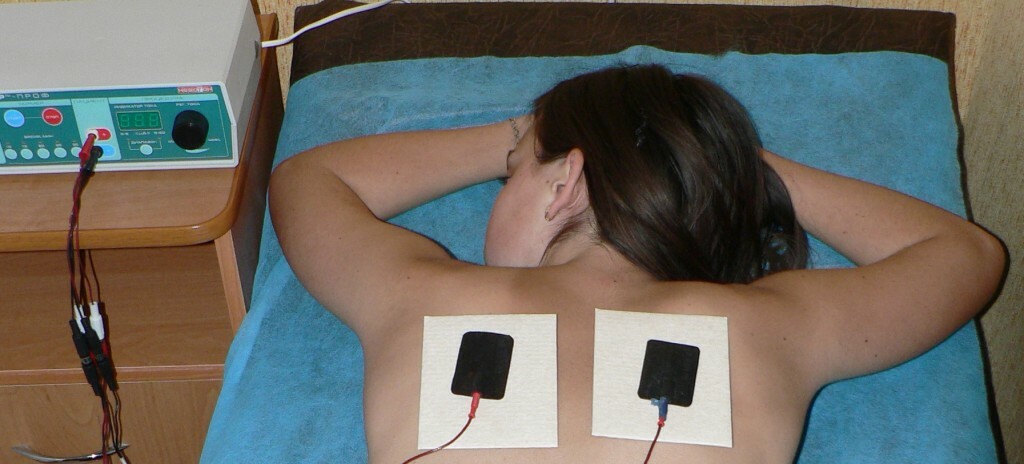
The nuances of the patient's nutrition
Patients with tuberculosis often experience poor appetite and weight loss. To replenish lost energy and maintain the body, patients need a highly nutritious diet.
The daily calorie content of the menu is calculated at the rate of 45 kcal per 1 kg of the patient's weight. An adult is recommended to consume at least 120 g of protein per day. The diet must contain linoleic acid, phospholipids, vitamins and minerals.
Recommended products include:
- milk;
- sour cream;
- cheese;
- cottage cheese;
- chicken;
- pork;
- veal;
- fish of all sorts;
- offal;
- White bread;
- all types of cereals;
- vegetable oils;
- fish fat;
- fresh fruits and vegetables;
- eggs.
When preparing dishes, spices and broths should be used to improve the taste of food and stimulate appetite.

Recovery prognosis
With timely detection and initiation of treatment, the prognosis is favorable. Most patients recover after undergoing a course of etiotropic therapy.
The complicated course of the disease and the absence of the necessary treatment worsens the prognosis.
The transition of tuberculosis to a chronic form and the formation of numerous cavities leads to the development of persistent respiratory failure and death of the patient.
Complications and possible consequences
Disseminated tuberculosis negatively affects all internal organs. Most patients are diagnosed with an enlargement of the right heart, which increases the risk of heart attack.
Dangerous complications of tuberculosis also include:
- pulmonary bleeding;
- emphysema;
- pneumothorax;
- respiratory failure.
With damage to the meninges, persistent neurological disorders are possible. In addition, there is a possibility of changes in the functioning of the organs of the urinary and digestive systems.
Prevention methods
To prevent infection with mycobacteria, children are vaccinated. Now information about the danger of the disease is being actively disseminated, measures are being taken to improve the sanitary and epidemiological situation.
Individual preventive measures include:
- compliance with the rules of personal hygiene;
- planned passage of fluorography;
- rejection of bad habits;
- regular sports;
- proper nutrition.
It is imperative to take precautions when dealing with people who are carriers of open tuberculosis.

